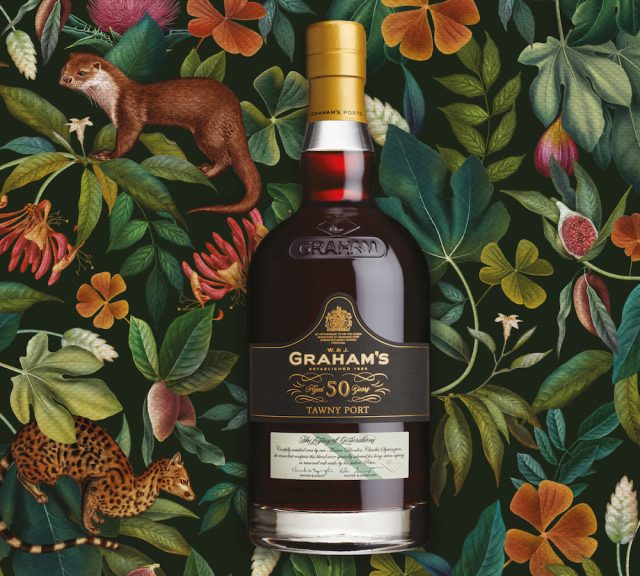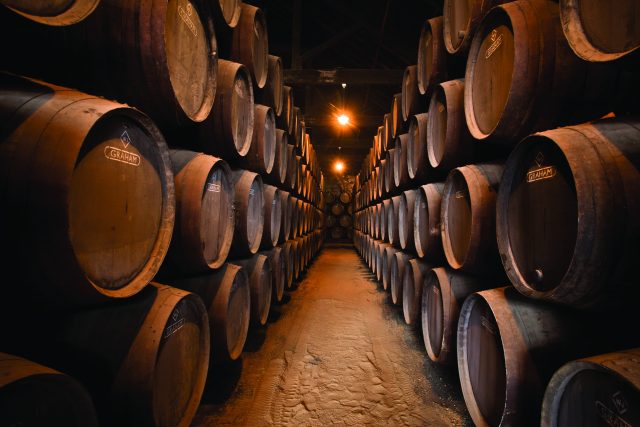This website uses cookies so that we can provide you with the best user experience possible. Cookie information is stored in your browser and performs functions such as recognising you when you return to our website and helping our team to understand which sections of the website you find most interesting and useful.
Meet the Maker: Charles Symington
The head winemaker of Symington Family Estates and president of the Primum Familiae Vini talks to Douglas Blyde about Graham’s rich history and toasting to “miracles”.

What is the history of Graham’s?
Founded in 1820 by brothers, William and John Graham, Graham’s swiftly gained a reputation for producing exceptional ports. This success led to the creation of Graham’s Lodge in Gaia and the acquisition of Quinta dos Malvedos in 1890. In 1882, at just 18, Andrew James Symington journeyed from Scotland to Porto to work for the Graham family, sparking a lasting alliance. In 1970, his grandsons acquired the company and continued to enhance its legacy.
What is your role in the business?
As production director, I oversee the entire winemaking and blending process for our Port and Douro wines, while also managing viticulture and the operations of all our properties. My role is to ensure that every bottle reflects the quality and heritage we’re known for.
Describe your vision in one sentence?
With respect for empirical knowledge, to improve and innovate.
When was the 50-year-old category created?
The IVDP (the regulatory body responsible for Port and wines from the Douro) introduced the 50 Year Old category at the end of 2020; we launched our 50 Year Old from Graham’s this spring.
What is your 50-year-old blend comprised of?
With this year’s release limited to just four casks, the two main component blends are significant to me. The first is a wine from 1969, known as “CAS Reserve”, which are my initials. It was originally set aside by my father to mark my birth year. The second is comprised of wines from 1970 and 1973. Blended in 1982, over 50% of this has evaporated throughout the decades, resulting in astonishing concentration.

How does it taste?
The wine’s captivating deep orange-brown hue, framed by a dark walnut base and pale green rim, is a sign of quality in aged tawny Ports. Complex aromas unfold: layers of orange blossom, fruitcake, toffee, tobacco, and butterscotch, creating a balanced and concentrated sensory experience. The mouthfeel is rich and creamy, with vibrant acidity maintaining perfect equilibrium. Enchanting notes of seasoned wood, nutmeg, cinnamon, and a pleasurable finish, endures on the palate.
Who is your target consumer?
Individuals with a deep appreciation for fine wine and history. Everyone I have shown this wine to is astonished by just how good it is. This is normally after a considerable pause, following tasting it, as if trying to register so many sensory responses at once!
Where did you unveil it?
We officially launched the 50 Year Old to the trade at ProWein in March, where it was presented to our key partners. However, since then, as part of the global launch, we have hosted events with our customers and press in London, Porto, Lisbon, Paris, Amsterdam, and South Korea.
Describe the second release, which coincides with the 50?
As part of the launch of the 50 Year Old, we decided to refresh the presentation of the 40 Year Old to bring it in line with the 50. Aged for an average of four decades in seasoned oak casks, it is a testament to time and patience. With a golden amber colour, Graham’s 40 Year Old has a complex nose with a powerful fragrance which belies its age. On the palate, it reveals an array of flavours, from delicate fruit raisins to toasted toffee and chocolate.
How did the design of the packaging come about?
The presentation of the Aged Tawny Collection is inspired by the age and scarcity of the 40 and 50 Year Old Tawny Ports. Designed by Portuguese artist, Mariana Rodrigues, the illustrations reflect rare flora and fauna found in the Douro Valley, including a genet cat and otter which have only been seen by locals through a night vision camera – reflecting the rarity of the wines we’ve used to make this exquisite blend. Each wine’s wooden box, carefully lined with wallpaper and panelling on the back, helps to create a familiar sense of home in which the wines are protected, and is reminiscent of British interior design dating back to the sixteenth century.

Does Graham’s accept visitors?
The Graham’s 1890 Lodge is a fully working Lodge in Vila Nova de Gaia, which is open to the public. We offer all our visitors a guided tour, taking them through the history of Graham’s as well as the intricate details of how Port is made and aged. This culminates in one of three beautiful tasting rooms where visitors can choose from a selection of different Port tastings.
If not Port, what would you have done?
I was always attracted to winemaking from a young age, my father having been the family member responsible for winemaking in his generation. And my tendency towards sciences and interest in nature make this a perfect job. This combined with an artistic aspect of blending wines which people appreciate, make it difficult to think of suitable alternatives.
Does Port have the possibility to be the finest wine in the world?
Yes. Port is a classic wine of the world offering a large diversity of exceptional wines from aged tawnies and single harvest to Late Bottled Vintage, and Vintage Port. Few wines if any offer the consistency of quality in aged wines that Port does, and in styles that are so different. This makes port attractive to a very wide spectrum of people, our job being to engage the consumer who almost always become seduced by these wines.
Finally, who would you raise a glass of the 50 Year Old to?
To my father, Peter, who wisely put these wines aside for ageing and, in particular, the 1969 of my birth year. Let’s toast to miracles!
symington.com
Related news
Cockburn’s unveils lighter Port bottle
Taylor's Port partners with the Game and Wildlife Conservation Trust

